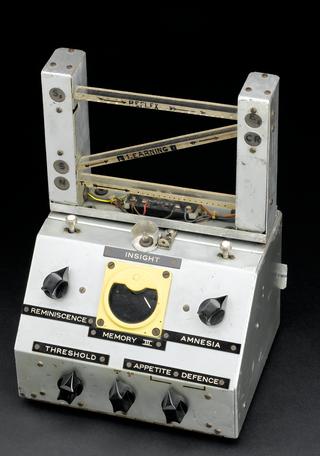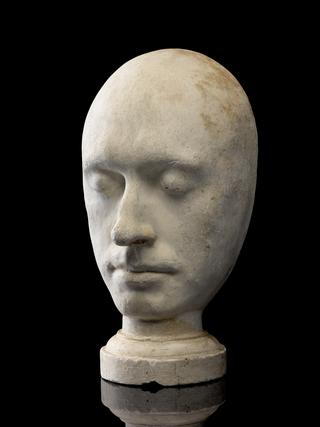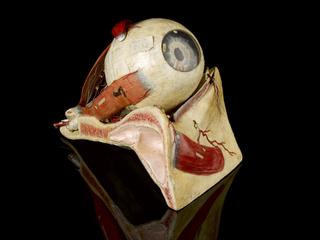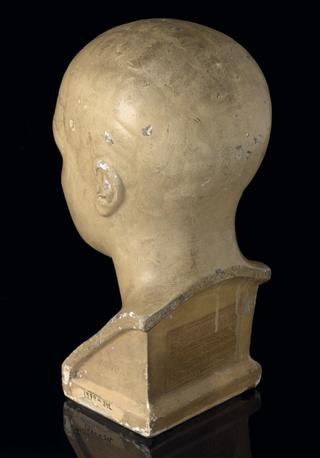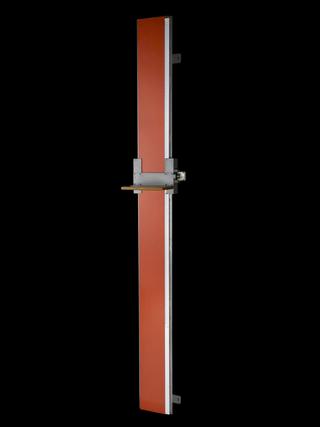



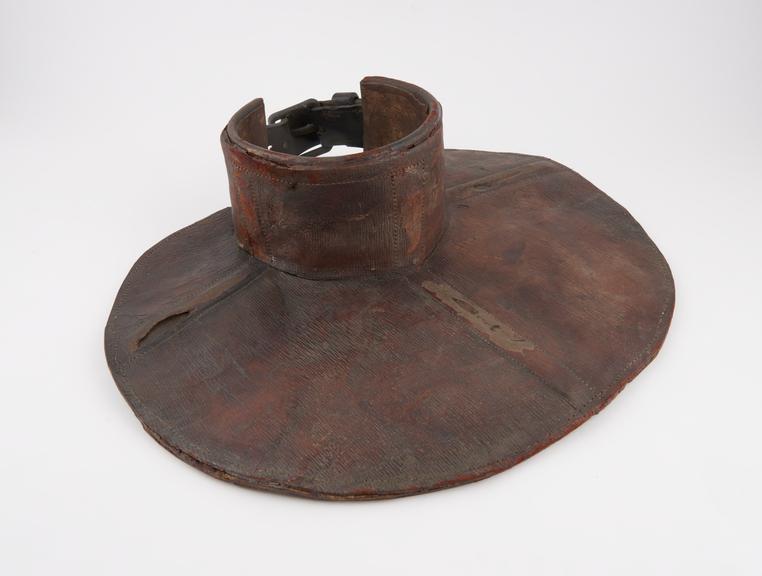


Replica of a wide-brimmed ('Elizabethan' style) leather restraint collar. This would have been used in conjunction with manacles or a straightjacket in order to prevent an insane inmate from biting his/her own body. The original, probably from the late 19th or early 20th century, was found around 1930 in a chest in the cellar at Hanwell Asylum, the asylum on the outskirts of London whose superintendant, John Conolly (1794-1866), famously renounced all instruments of mechanical restraint in favor of 'moral treatment,' that is, regular labour under constant close surveillance.
The original restraint collar was found in the 1930s. It was discovered in a chest in the cellar of the Hanwell Asylum in Middlesex. Henry Wellcome had this replica made to add to his vast collection. The collar surprisingly demonstrates care for the patient. This suggests it dates from the early 1800s rather than from an earlier period. It has a wide ‘Elizabethan’ style brim. If used with manacles for the arms and legs, this prevented a patient tearing at himself or herself with his or her teeth. The copy is made of heavy leather with metal buckles. The leather is heavily scuffed. Either this is a highly accurate replica or it was exhibited in Wellcome’s museum on a manikin together with a set of chains and manacles. The marks indicate the collar shielded the patient’s neck from being chafed or cut by the iron restraint chains. It also suggests the chains were for long-term rather than short-term restraint. John Connelly, who became resident physician at Hanwell in 1839, famously established a policy of complete non-restraint of patients. The survival of this collar suggests his policy did not match reality. However, the asylum may have kept it as a grim memento of the bad old days.
Details
- Category:
- Psychology, Psychiatry & Anthropometry
- Collection:
- Sir Henry Wellcome's Museum Collection
- Object Number:
- A600285
- Materials:
- leather and buckle, metal
- Measurements:
-
overall: 100 mm x 410 mm x 350 mm, 1.01kg
- type:
- restraint collar
